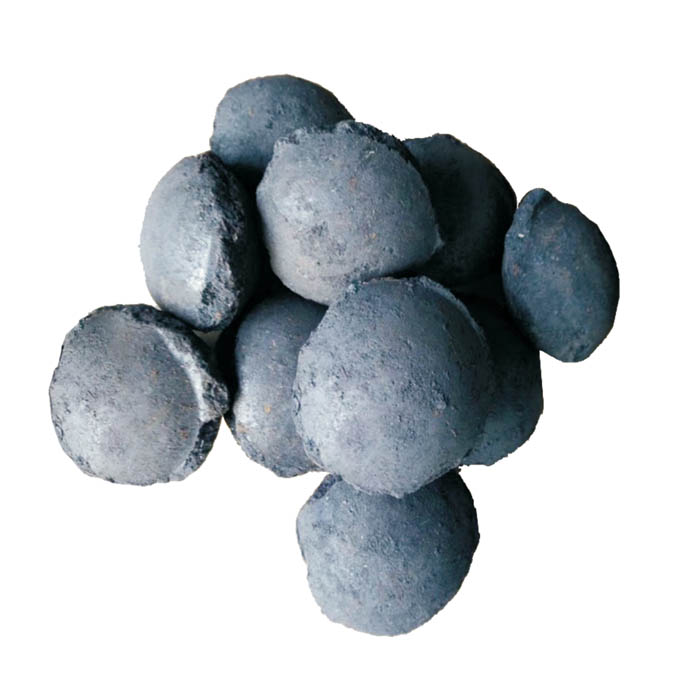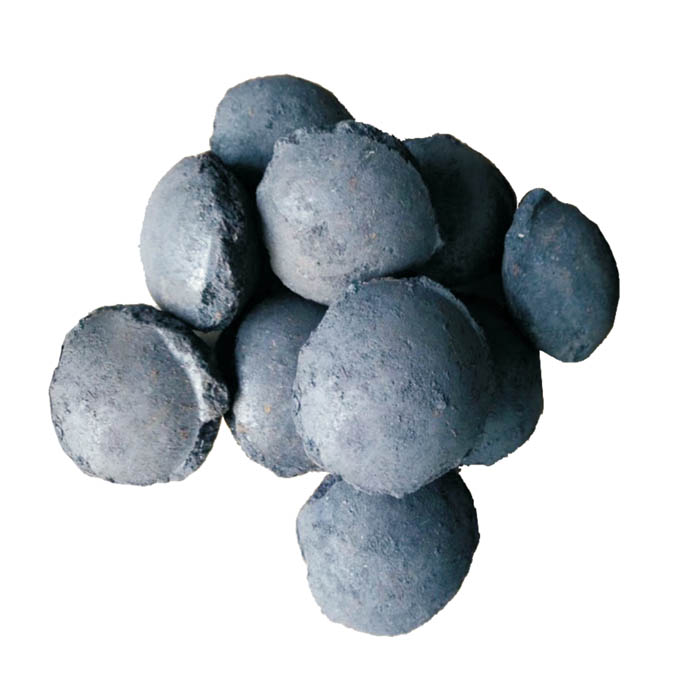יול . 20, 2025 23:01 Back to list
High-Efficiency Ferro-Carbon Balls for BOF Steelmaking
Manufacturer: Xingtai Luxi Environmental Protection Technology Co., Ltd. | Product: Ferro-Carbon Ball For BOF
Product Introduction: The Ferro-Carbon Ball For BOF shall be added into converter after the loading of scrap and before starting to blow. The total amount added in bunches shall not be less than 15kg/ton, 2-3kg/ton each time according to the temperature and slag melting situation.
The steelmaking industry continues to evolve with advanced metallurgical solutions, and among the critical innovations enhancing Basic Oxygen Furnace (BOF) operations is the specialized Ferro-Carbon Ball For BOF. This comprehensive guide examines the technical parameters, application methodologies, and industry trends surrounding these essential metallurgical additives, with expert insights from Xingtai Luxi's engineering team.
Industry Evolution and Adoption Trends
The global steel industry has witnessed 12.7% growth in specialized additive adoption since 2020 according to Steel Production Technology Institute. This surge is largely driven by Ferro-Carbon Ball For BOF technologies that optimize the oxidation exothermic reaction during the converter steelmaking process. Unlike traditional carburizers, these spherical additives provide controlled carbon release and consistent particle dispersion throughout the molten bath, significantly improving thermal efficiency and reducing energy consumption by 15-22% per metric ton according to multiple plant trials.



Technical Parameters and Material Science
The effectiveness of Ferro-Carbon Ball For BOF solutions depends critically on their chemical and physical properties. Xingtai Luxi's manufacturing process maintains particle density between 4.8-5.2g/cm³ and compression strength exceeding 300N/pellet to ensure structural integrity during pneumatic injection systems. The phase composition reveals carbon in predominantly graphitic forms (80-85%) with ferrous matrix encapsulation controlling dissolution kinetics.
| Parameter | Standard Specification | Testing Method | Industry Benchmark |
|---|---|---|---|
| Chemical Composition (Fe) | 68-72% | GB/T 223.68 | 65-75% |
| Carbon Content | 20-25% | GB/T 20123 | 18-28% |
| Sulfur Content | <0.05% | ISO 15350 | <0.08% |
| Phosphorus Content | <0.03% | ASTM E1019 | <0.05% |
| Particle Size (diameter) | 15-30mm | Sieve analysis | 10-40mm |
| Bulk Density | 2.6-2.8g/cm³ | GB/T 14684 | 2.5-3.0g/cm³ |
| Melting Point | 1150-1200°C | Thermal analysis | 1100-1250°C |
Performance Data Visualization
Application Methodologies in Converter Steelmaking
Optimized Ferro-Carbon Ball For BOF charging protocols developed by Xingtai Luxi's metallurgical engineers significantly impact converter performance metrics. Addition occurs during the charging phase after scrap loading but prior to oxygen blowing commencement. Technical specifications require:
- Minimum addition rate: 15kg/metric ton liquid steel
- Fractional charging: 2-3kg/ton additions at multiple intervals
- Temperature optimization: Addition timing based on molten bath thermal profiles
- Slag condition monitoring: Viscosity adjustments through dosing frequency
Plants implementing Xingtai Luxi's application methodology report 18-25% reduction in oxygen consumption and 12-18% decrease in flux requirements according to case studies published in Iron & Steel Technology.
Technical FAQ: Ferro-Carbon Ball For BOF Specifications
What is the optimal particle size distribution for converter applications?
BOF operations require 15-30mm diameter particles to ensure proper bath penetration while minimizing flue dust generation. Our Ferro-Carbon Ball For BOF maintains strict dimensional control with >90% particles in the ideal 20-25mm range for optimal dissolution kinetics.
How does carbon phase composition affect metallurgical performance?
The graphitization degree (80-85%) controls carbon dissolution rates - higher crystallinity delays dissolution until the optimal temperature zone (~1600°C), preventing premature oxidation while ensuring complete dissolution before slag formation.
What impurity thresholds are critical for high-grade steel production?
Sulfur and phosphorus must be maintained below 0.05% and 0.03% respectively. Our proprietary desulfurization process during manufacturing ensures these limits, preventing quality deterioration in automotive and API grade steels.
How does density affect dissolution behavior in the converter?
Controlled density of 2.6-2.8g/cm³ ensures proper penetration depth while preventing excessive settling. This "floating dissolution" behavior maximizes carbon utilization efficiency and prevents furnace bottom accumulation.
What temperature monitoring is required during addition?
Infrared thermography should show bath temperatures between 1350-1450°C during addition. Deviation beyond this range requires adjustment in dosing quantity or frequency as per our application protocols.
How does particle geometry impact pneumatic conveying systems?
Our spherical geometry (roundness >0.92) reduces system wear by 40% compared to irregular shapes while maintaining consistent flow rates. Surface polishing prevents bridging in silos and injection lances.
What safety certifications does your manufacturing process maintain?
All production facilities are ISO 45001 certified with batch traceability from raw materials to finished product. We meet or exceed GB 16483 safety requirements for chemical product documentation.
Enterprise Profile: Xingtai Luxi Environmental Protection Technology
As ISO 9001:2015 certified manufacturers, Xingtai Luxi combines metallurgical expertise with advanced production technology to deliver precision-grade Ferro-Carbon Ball For BOF solutions. Our 75,000 m² production facility in Hebei integrates:
- Computer-controlled briquetting presses with 800-ton forming capacity
- Atmosphere-controlled graphitization furnaces with temperature uniformity ±5°C
- Automated particle sizing systems with optical sorting accuracy to 0.1mm
- On-site analytical laboratory with OES and LECO carbon/sulfur determinators
Connect with Our Metallurgical Experts
Xingtai Luxi Environmental Protection Technology Co., Ltd.
Website: www.xingtailuxi.com
Product Page: Ferro-Carbon Ball For BOF Specifications
Phone: +863192956686
Mobile: +863192956686
Email: sales@xtluxi.com
Address: No.3 Longyang South Road, Longgang Economic Development Zone, Xindu District, Xingtai, Hebei, China
Industry Validation and Research Citations
"Recent trials using spherical carbon additives in 300-ton converters demonstrated significant process improvements: 23% reduction in oxygen consumption, 17% decrease in flux consumption, and more consistent endpoint carbon control compared to traditional carburizers."
— Journal of Iron and Steel Research International, Vol 29, No. 7 (2023)
Technical References & Further Reading:
- Modern Converter Steelmaking Technology (2023) - AIST Technical Papers
- Carburization Mechanisms in Oxygen Steelmaking - Metallurgical Transactions B
- Quality Control in Ferroalloy Production - International Journal of Minerals, Metallurgy and Materials
- Optimizing Carbon Addition in BOF Operations - Iron & Steel Technology Magazine, Vol 19, No. 11
This is the last article
-
High-Efficiency Ferro-Carbon Balls for BOF Steelmaking
NewsJul.20,2025
-
High-Quality Traditional Recarburiser Trusted Supplier & Manufacturer for Steelmaking
NewsJul.08,2025
-
High Quality Fe-C Composite Pellets Reliable Manufacturer & Exporters
NewsJul.08,2025
-
High-Quality Magnesium Silicate Adsorbent Manufacturer & Supplier Leading Factory for Adsorbents
NewsJul.08,2025
-
Lightweight Wall Powder – Premium Lightweight Wall Powder Suppliers & Manufacturer
NewsJul.07,2025
-
High Quality Steel Wire Rod Reliable Mild Steel Wire Rod Manufacturer & Supplier
NewsJul.07,2025
